
Vejle: Denmark's Hidden Gem
Discover Vejle, Denmark's hidden gem, where natural beauty meets vibrant urban life. Explore historic sites, enjoy outdoor adventures, and savor delicious Danish cuisine.
Vejle, nestled in the heart of Denmark, is a charming city that seamlessly blends natural beauty with vibrant urban life. Known for its picturesque landscapes and rolling hills, Vejle offers a tranquil escape from the hustle and bustle of larger cities. The city is surrounded by lush forests and fjords, making it a haven for outdoor enthusiasts and nature lovers. The city center is a delightful mix of old and new, with historic buildings standing alongside modern architecture. Stroll through the cobbled streets and discover quaint cafes, boutique shops, and a lively market square. Vejle is also home to the iconic Vejle Windmill, a must-visit landmark that offers panoramic views of the city and its surroundings. Art and culture thrive in Vejle, with numerous galleries, museums, and theaters showcasing both local and international talent. The Vejle Art Museum, in particular, is a cultural highlight, housing an impressive collection of Danish and European art. For families, the GorillaPark Vejle offers an adventurous day out with its treetop courses and zip lines. Vejle's culinary scene is another reason to visit, with a variety of restaurants offering everything from traditional Danish fare to international cuisine. Don't miss the chance to try local delicacies such as smørrebrød and Danish pastries. Whether you're seeking relaxation, adventure, or cultural enrichment, Vejle has something to offer every traveler. Its unique blend of natural beauty, rich history, and modern amenities makes it an unforgettable destination.
Local tips in Vejle
- Visit the Vejle Windmill for panoramic views of the city and surrounding landscapes.
- Explore the hiking trails in the Vejle Ådal valley for a serene nature experience.
- Check out the local market square for fresh produce and unique souvenirs.
- Don't miss the Vejle Art Museum, especially if you appreciate Danish and European art.
- Try the traditional Danish open-faced sandwiches, known as smørrebrød, at local eateries.
- For families, GorillaPark Vejle offers exciting treetop courses and zip lines.
Vejle: Denmark's Hidden Gem
Vejle, nestled in the heart of Denmark, is a charming city that seamlessly blends natural beauty with vibrant urban life. Known for its picturesque landscapes and rolling hills, Vejle offers a tranquil escape from the hustle and bustle of larger cities. The city is surrounded by lush forests and fjords, making it a haven for outdoor enthusiasts and nature lovers. The city center is a delightful mix of old and new, with historic buildings standing alongside modern architecture. Stroll through the cobbled streets and discover quaint cafes, boutique shops, and a lively market square. Vejle is also home to the iconic Vejle Windmill, a must-visit landmark that offers panoramic views of the city and its surroundings. Art and culture thrive in Vejle, with numerous galleries, museums, and theaters showcasing both local and international talent. The Vejle Art Museum, in particular, is a cultural highlight, housing an impressive collection of Danish and European art. For families, the GorillaPark Vejle offers an adventurous day out with its treetop courses and zip lines. Vejle's culinary scene is another reason to visit, with a variety of restaurants offering everything from traditional Danish fare to international cuisine. Don't miss the chance to try local delicacies such as smørrebrød and Danish pastries. Whether you're seeking relaxation, adventure, or cultural enrichment, Vejle has something to offer every traveler. Its unique blend of natural beauty, rich history, and modern amenities makes it an unforgettable destination.
When is the best time to go to Vejle?
Iconic landmarks you can’t miss
Jelling Mounds, Runic Stones and Church
Explore Andelstrappen og Fortællegyngestolen, Odense's homage to Denmark's cooperative heritage through art and storytelling.
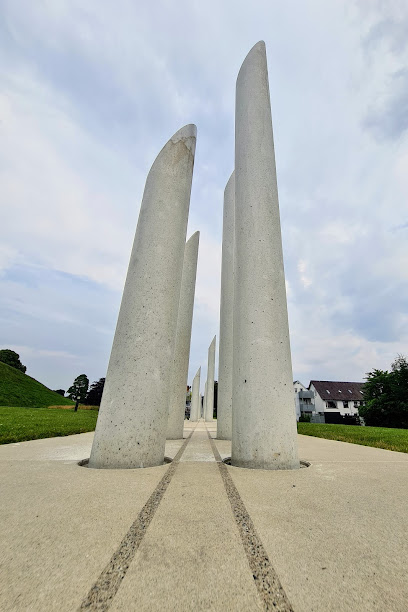
Vejle Art Museum
Experience the tranquil beauty of Sneglehøjen, Odense's serene natural retreat perfect for relaxation and exploration.
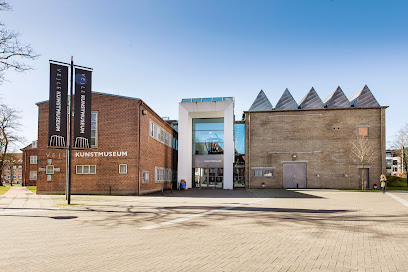
Deer Park Vejle
Experience authentic Danish rural life at The Funen Village in Odense – a living open-air museum with historic buildings, traditional crafts, and family-friendly activities.
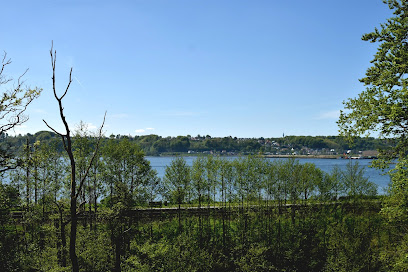
Kulturmuseet
Discover the tranquil beauty of Sneglehøjen, Odense's serene natural retreat perfect for relaxation and nature walks.
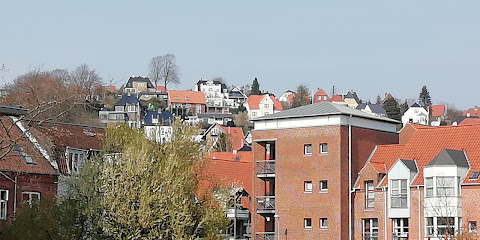
Tirsbæk Gods
Experience Tirsbæk Gods, an enchanting Renaissance estate on Vejle Fjord offering historic architecture, idyllic gardens, and immersive events in Denmark’s scenic countryside.
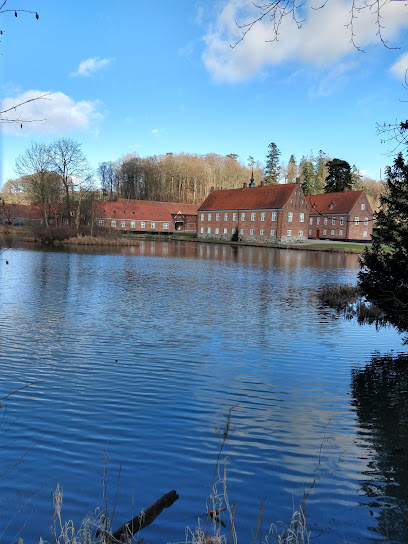
Vejle Vindmølle
Experience living Danish history with thatched farmhouses, working crafts, and traditional gardens at The Funen Village, an immersive open-air museum in Odense.
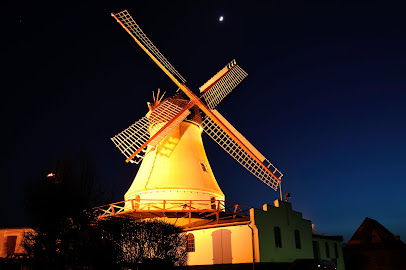
VisitVejle
Explore Andelstrappen and Fortællegyngestolen in Odense: A fusion of nature's beauty and rich literary heritage.
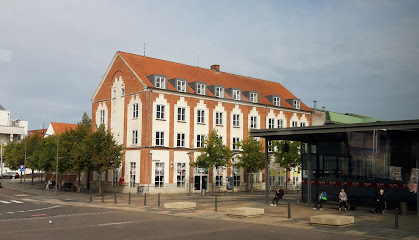
Vejle Kunstforening
Discover the serene beauty of Sneglehøjen, Odense's tranquil natural retreat.
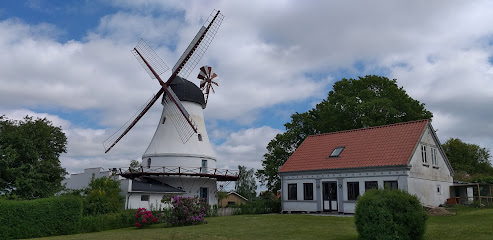
Brunnen Rathaus
Step back in time at The Funen Village, Odense’s open-air museum showcasing 19th-century farm life, with historic buildings, crafts, costumed interpreters, and family fun.
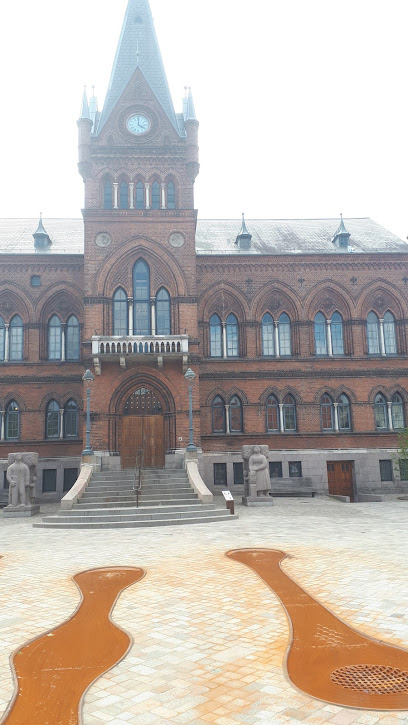
Anno Dom 1913
Step into 19th-century Denmark at The Funen Village—a living museum near Odense where history unfolds in authentic farmhouses, gardens, and lively rural traditions.
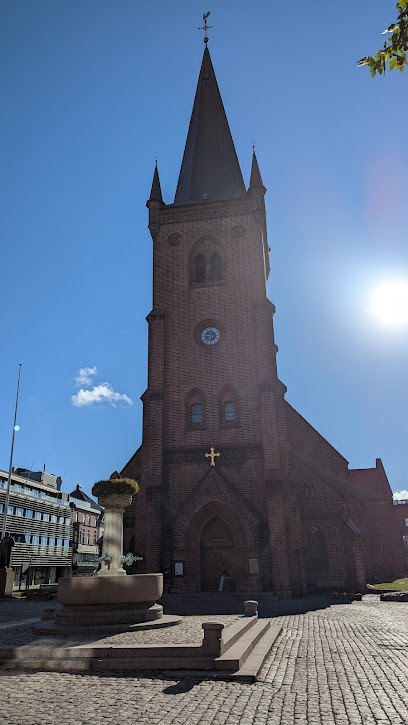
The Midgård Well
Experience 18th and 19th-century Danish rural life at The Funen Village in Odense.
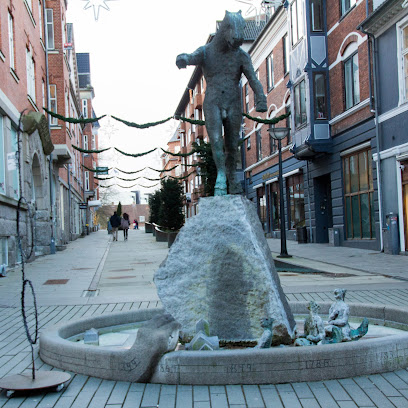
Kunsthal Vejle
Step back in time at The Funen Village, Odense’s open-air museum, and discover authentic 19th-century farm life, historic buildings, and Danish rural traditions.
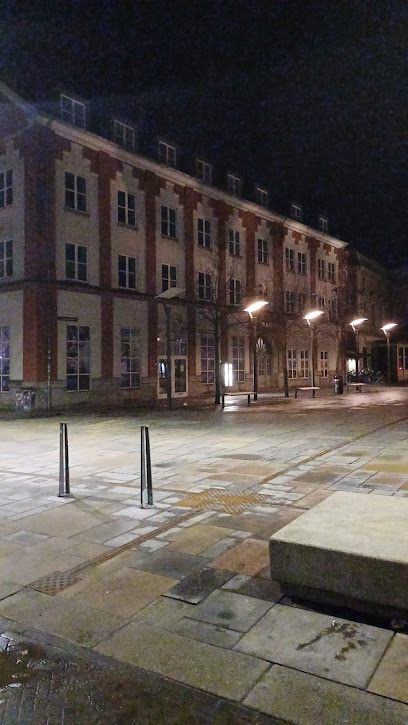
Local Phrases
-
- HelloHej
[hey] - GoodbyeFarvel
[far-vel] - YesJa
[ya] - NoNej
[nay] - Please/You're welcomeVær så god
[ver sa go] - Thank youTak
[tahk] - Excuse me/SorryUndskyld
[oon-skeel] - How are you?Hvordan har du det?
[vohr-dan har doo deh] - Fine. And you?Fint. Og dig?
[feent oh deh] - Do you speak English?Taler du engelsk?
[tah-ler doo en-gelsk] - I don't understandJeg forstår ikke
[yay for-stor ee-keh]
- HelloHej
-
- I'd like to see the menu, pleaseJeg vil gerne se menuen, tak
[yay vil gehrne seh me-noo-en tahk] - I don't eat meatJeg spiser ikke kød
[yay spee-ser ee-keh kuhd] - Cheers!Skål!
[skawl] - I would like to pay, pleaseJeg vil gerne betale, tak
[yay vil gehrne beh-tah-leh tahk]
- I'd like to see the menu, pleaseJeg vil gerne se menuen, tak
-
- Help!Hjælp!
[hyelp] - Go away!Gå væk!
[gow vehk] - Call the Police!Ring til politiet!
[reen tee-ell po-lee-tee-eh] - Call a doctor!Ring efter en læge!
[reen af-ter en lay-eh] - I'm lostJeg er gået forkert
[yay er gow-et for-kehrt] - I'm illJeg er syg
[yay er soog]
- Help!Hjælp!
-
- I'd like to buy...Jeg vil gerne købe...
[yay vil gehrne kuh-beh] - I'm just lookingJeg kigger bare
[yay kee-ger bah-reh] - How much is it?Hvor meget koster det?
[vohr meh-eh kohs-ter deh] - That's too expensiveDet er for dyrt
[deh er for deer-t] - Can you lower the price?Kan du sænke prisen?
[kan doo sahn-keh pree-sen]
- I'd like to buy...Jeg vil gerne købe...
-
- What time is it?Hvad er klokken?
[vahd er kloh-ken] - It's one o'clockKlokken er et
[kloh-ken er et] - Half past (10)Halv ti
[halv tee] - MorningMorgen
[mohr-gen] - AfternoonEftermiddag
[ef-ter-mee-dahg] - EveningAften
[af-ten] - YesterdayI går
[ee gohr] - TodayI dag
[ee dah] - TomorrowI morgen
[ee mohr-gen] - 1Et
[et] - 2To
[toh] - 3Tre
[treh] - 4Fire
[fee-reh] - 5Fem
[fem] - 6Seks
[seks] - 7Syv
[soov] - 8Otte
[oh-teh] - 9Ni
[nee] - 10Ti
[tee]
- What time is it?Hvad er klokken?
-
- Where's a/the...?Hvor er en/the...?
[vohr er en/the] - What's the address?Hvad er adressen?
[vahd er ah-dres-en] - Can you show me (on the map)?Kan du vise mig (på kortet)?
[kan doo vee-seh meeh (poh kohr-teh)] - When's the next (bus)?Hvornår er næste (bus)?
[vohr-nor er neh-steh (boos)] - A ticket (to ....)En billet (til ....)
[en bee-let (teel ....)]
- Where's a/the...?Hvor er en/the...?
History of Vejle
-
Vejle's history dates back to the Viking Age, around the 8th to 11th centuries. The town's name is derived from the Old Norse word 'Vé,' meaning a holy place, and 'Læ,' meaning stream, reflecting its importance as a religious and settlement site. Archaeological excavations have uncovered burial mounds and artifacts, indicating that Vejle was a significant location during this period.
-
By the 13th century, Vejle had developed into a bustling market town. Its strategic location by the Vejle Fjord made it a central hub for trade and commerce. The town received its charter in 1327, which granted it certain privileges and marked its importance in the region. The remnants of medieval streets and structures still hint at this prosperous period.
-
Vejle experienced significant growth during the 19th century with the advent of the Industrial Revolution. The establishment of textile mills and factories transformed the town into a center for industry and innovation. One of the most notable sites is the Vejle Spinning Mill, which played a crucial role in the town's economic development and is now a museum showcasing this industrial heritage.
-
Constructed in 1847, the Vejle Windmill stands as an iconic landmark of the town's agricultural past. This Dutch-style windmill was pivotal for grinding grain into flour, supporting the local farming community. Today, it serves as a cultural heritage site, offering a glimpse into the traditional milling techniques and rural life of the 19th century.
-
During World War II, Denmark was occupied by Nazi Germany, and Vejle was no exception. The town played a role in the resistance movement, with local citizens participating in sabotage and intelligence operations against the occupiers. The Vejle Museum houses exhibits that narrate the town's wartime experiences and the bravery of its residents.
-
In recent decades, Vejle has embraced modernity while respecting its historical roots. The town is known for its innovative architecture, such as the Wave (Bølgen) apartments designed by Henning Larsen. These structures symbolize Vejle's commitment to blending contemporary design with its scenic natural surroundings, making it a vibrant and dynamic place to visit.
Vejle Essentials
-
Vejle is well-connected and easily accessible from various parts of Denmark and Europe. The nearest international airport is Billund Airport, located about 30 kilometers west of Vejle. From the airport, you can take a direct bus or taxi to the city. Alternatively, you can travel to Vejle by train, as it is a major stop on the Danish railway network, with frequent connections to Copenhagen, Aarhus, and other major cities. For those driving, Vejle is easily accessible via the E45 motorway.
-
Vejle offers various transportation options for getting around the city and its surroundings. The local bus network is efficient and covers most parts of the city. Tickets can be purchased via mobile apps or at ticket machines. For short distances, biking is a popular choice, and you can rent bikes from various rental shops. Taxis are also readily available, and car rentals can be arranged for those looking to explore further afield.
-
The official currency in Denmark is the Danish Krone (DKK). Credit and debit cards are widely accepted in Vejle, including in shops, restaurants, and hotels. Contactless payments are popular, and mobile payment solutions such as MobilePay are commonly used. ATMs are easily accessible throughout the city, and foreign currency can be exchanged at banks or exchange bureaus.
-
Vejle is generally a safe city for tourists. However, as with any travel destination, it is wise to take standard precautions. Avoid leaving your belongings unattended and be mindful of pickpockets in crowded areas. There are no specific high-crime areas targeting tourists in Vejle, but it is always best to stay vigilant and aware of your surroundings, especially at night.
-
In case of emergency, dial 112 for immediate assistance. This number connects you to police, fire, and medical services. Vejle has a well-equipped hospital and several clinics for medical needs. Pharmacies are available throughout the city for over-the-counter medications. It is advisable to carry travel insurance that covers medical emergencies.
-
Fashion: Do wear comfortable and weather-appropriate clothing. Denmark has a casual dress code, but avoid overly revealing outfits. Religion: Do respect religious sites and practices. While Denmark is largely secular, some churches and religious sites may have specific dress codes. Public Transport: Do purchase tickets before boarding and be respectful to other passengers. Don't be loud or disruptive. Greetings: Do greet people with a handshake and maintain eye contact. Eating & Drinking: Do try the local cuisine and be polite when dining out. Don't tip heavily; service charges are usually included.
-
To experience Vejle like a local, visit the Vejle Market Square, where you can enjoy fresh produce and local goods. Take a stroll along the Vejle River and explore the lush green areas like the Nørreskoven forest. Engage with locals in cafes and restaurants to learn more about the city’s culture and history. Don't miss the Vejle Art Museum and the iconic Fjordenhus for a taste of local art and architecture.
Nearby Cities to Vejle
-
Things To Do in Kolding
-
Things To Do in Horsens
-
Things To Do in Silkeborg
-
Things To Do in Herning
-
Things To Do in Ribe
-
Things To Do in Odense
-
Things To Do in Aarhus
-
Things To Do in Esbjerg
-
Things To Do in Viborg
-
Things To Do in Randers
-
Things To Do in Sønderborg
-
Things To Do in Nyborg
-
Things To Do in Kalundborg
-
Things To Do in Slagelse
-
Things To Do in Næstved











